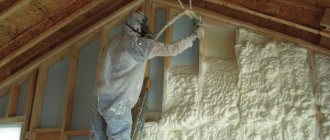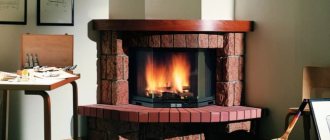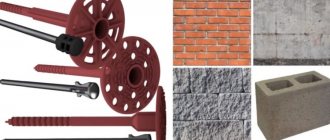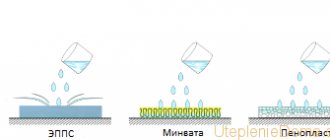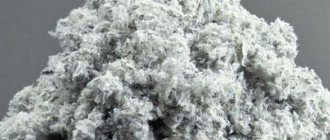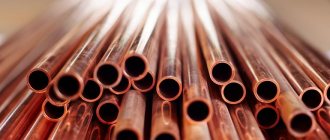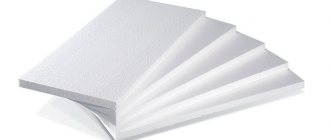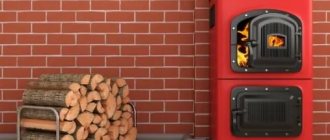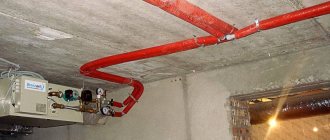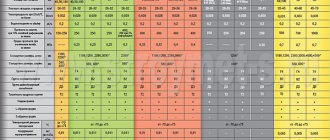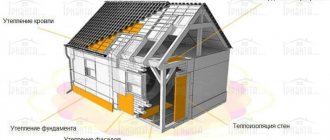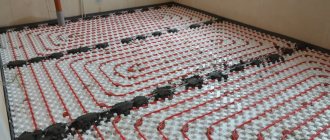Expanded polystyrene boards, colloquially referred to as polystyrene foam, are an insulating material, usually white. It is made from thermally expanded polystyrene. In appearance, the foam is presented in the form of small moisture-resistant granules; during the melting process at high temperatures, it is smelted into one whole, a slab. The sizes of the granule parts are considered to be from 5 to 15 mm. The outstanding thermal conductivity of 150 mm thick foam is achieved due to a unique structure - granules.
Each granule has a huge number of thin-walled micro-cells, which in turn increase the area of contact with air many times over. We can say with confidence that almost all polystyrene foam consists of atmospheric air, approximately 98%, in turn, this fact is their purpose - thermal insulation of buildings both outside and inside.
Everyone knows, even from physics courses, that atmospheric air is the main insulator of heat in all thermal insulation materials; it is in a normal and rarefied state, in the thickness of the material. Heat-saving, the main quality of polystyrene foam.
As mentioned earlier, polystyrene foam is almost 100% air, and this in turn determines the high ability of polystyrene foam to retain heat. This is due to the fact that air has the lowest thermal conductivity. If we look at the numbers, we will see that the thermal conductivity of polystyrene foam is expressed in the range of values from 0.037 W/mK to 0.043 W/mK. This can be compared with the thermal conductivity of air - 0.027 W/mK.
While the thermal conductivity of popular materials such as wood (0.12 W/mK), red brick (0.7 W/mK), expanded clay (0.12 W/mK) and others used for construction is much higher.
Polystyrene foam provides a high level of energy saving due to its low thermal conductivity. For example, if you build a wall of brick with a thickness of 201 cm or use a wood material with a thickness of 45 cm, then for foam plastic the thickness will be only 12 cm for a certain amount of energy savings.
Therefore, polystyrene foam is considered to be the most effective material among the few for thermal insulation of external and internal walls of a building. Residential heating and cooling costs are significantly reduced through the use of polystyrene foam in construction.
The excellent qualities of polystyrene foam boards have found their application in other types of protection, for example: polystyrene foam, which also serves to protect underground and external communications from freezing, due to which their service life increases significantly. Polystyrene foam is also used in industrial equipment (refrigerators, refrigerators) and in warehouses.
What should you buy?
The building materials market offers a huge selection of polystyrene foam boards. The high thermal conductivity of insulation boards depends on their type. For example: a sheet of polystyrene foam PSB-S 15 has a density of up to 15 kg/m3 and is 2 cm thick. For a sheet from 2 to 50 cm, the density is no more than 35 kg/m3. When comparing polystyrene foam with other similar materials, you can easily trace the dependence of the thermal conductivity of polystyrene foam boards on its thickness.
So, for example: the thermal conductivity of polystyrene foam is 50 mm, twice that of mineral wool of the same volume; in this case, the thermal conductivity of polystyrene foam with a thickness of 150 mm will generally be 6 times higher than these indicators. Basalt wool is also very inferior to polystyrene foam.
In order to apply one of the insulation methods, it is necessary to select the correct dimensions of the material. The following algorithm can be used to calculate:
- It is necessary to clarify the overall thermal resistance. This value depends on the region in which the calculation needs to be performed, namely on its climate.
- To calculate the thermal resistance of a wall, you can use the formula R=p/k, where its thickness is equal to the p value, and k is the thermal conductivity coefficient of the foam.
- From constant indicators we can conclude what resistance the insulation should have.
- The required value can be calculated using the formula p=R*k; the value of R can be found based on the previous step and the thermal conductivity coefficient.
Complete information about extruded polystyrene foam
Extruded polystyrene foam, what is it? Extruded polystyrene foam is a synthetic material for thermal insulation, developed by an American construction company in the 50s of the twentieth century. Manufactured using foaming technology, the composition uses polymer compositions. The material is pressed through a special mold and joined into a single piece.
Available in the form of slabs and substrates. Found on the market as a decorative element. The standard size of the slabs is 600x1200 or 600x2400 mm. Standard sizes are established by GOSTs, but many companies change the sizes, making plates of different widths. The common size is 580 mm. The thickness of the elements varies from 20 mm to 10 cm, depending on the manufacturer.
The material is delivered to retail outlets in packages of several elements. The number of units in one package depends on the thickness of the products. For example, if the thickness of the slabs is 5 cm, the package usually contains 8 units of goods. With a thickness of 10 cm, 4 plates are packed.
Additional information: it is possible to produce expanded polystyrene as a floor covering. The modern market offers materials for laminate, parquet, and linoleum. It is possible to manufacture decorative elements based on the material. They look exactly like plaster.
Advantages and disadvantages
Like any other material, extruded polystyrene foam has advantages and some disadvantages. It is worth familiarizing yourself with them before purchasing and using them.
Advantages of extruded polystyrene foam:
- Moisture absorption within 0.2%. This indicator means almost complete waterproofness.
- Minimum thermal conductivity. At a standard temperature of 25°C it is about 0.032 W/m*K. If we compare the heat conductivity, the indicators are as follows: 55 cm of brick equals 3 cm of polystyrene foam.
- Withstands deformation well. Can be used for laying under a blind area, or after the foundation.
- Does not react with inorganic chemical reagents.
- Withstands significant temperature changes, the indicators do not change at air temperatures from -50 to +75°C.
- According to the documentation, the material can be used for at least half a century. During this time, the characteristics will not change.
- Environmentally friendly substance. It is used not only as insulation, but, for example, for the production of lightweight disposable plates or other types of cheap tableware. Children's toys are made from it.
- Has minimal weight. A small thickness is enough for good insulation.
In addition to numerous positive characteristics, some disadvantages can be identified:
- comparison with other types of insulation shows that the price of the material is high;
- highly flammable. During the combustion process, harmful substances and black smoke are released;
- destroyed under the influence of infrared rays. To maintain performance characteristics, it must be hidden from direct sunlight;
- Manufacturers assure that rodents will not grow inside the insulation. Indeed, they do not live inside, but often make channels for movement;
- solvents destroy the structure.
In addition to the listed disadvantages, low vapor permeability can be added to them. Sometimes this is a plus, but if you insulate a wooden house, fungi and mold may develop. As a result, an unpleasant odor appears in the home and dampness is constantly felt.
Application area
Extruded gray polystyrene foam has a wide range of applications. Mainly used for insulation work. The scope of use is limited only by temperature indicators (not higher than 75°C). The material can be laid in damp places, in the ground.
Typically, the scope of use is limited only by financial capabilities. The high cost makes it impractical for use in many places. In places where there is no need for high technical characteristics, ordinary polystyrene foam is used instead of PPS, reviews of which are also positive, in order to save money.
Used for insulation:
- concrete or wooden floors;
- walls indoors or outside the building. Compatible with any material;
- wells. Often concrete rings are coated with material for additional protection;
- blind areas;
- surface of the earth. To prevent destruction of the structure, paint is applied. Even a thin layer will not allow the composition to deteriorate.
In addition to the listed areas, the material is used in road construction. Included in many refrigeration units as extruded insulation. Used in agriculture. Roofs and underground floors are insulated with expanded polystyrene. One of the promising areas is the production of sandwich panels.
Technical characteristics of extruded polystyrene foam
The material has some of the highest technical characteristics on the market of insulation products. Any gas has a much lower thermal conductivity than solids. For air, the figure is 0.026 W/m*oC. Extruded polystyrene foam is an air mixture of approximately 90%. It has a thermal conductivity of 0.03 W/m*oC. Almost like air, which means heat is retained perfectly.
The material is produced with different densities. Manufacturers offer from 25 to 47 kg/m3. The higher the number, the greater the strength. As the density increases, the strength increases from 20,000 to 50,000 kg/m2.
Water is poorly absorbed by polystyrene foam. In about a month, one tile can absorb about 0.4% of its own volume if it is completely immersed in water. Further, the percentage of absorbed liquid does not increase, but stops. Vapor permeability is minimal. It is 0.0128 Mg/(m*h*Pa). Often companies specializing in repair work suggest not using vapor barriers, limiting themselves to using only polystyrene.
The insulation is able to withstand temperatures ranging from -50 to +75°C. Its use is possible in almost any climate. The flammability is high, the class varies depending on the addition of additional substances, from G1 to G4.
Some models have a special recess along the edges. Made to increase the tightness of the slabs by insulating the seams. This innovation prevents cold layers from forming between the elements, ensuring complete heat retention.
Tests were carried out with polystyrene foam. Their meaning is repeated freezing and thawing of wet tiles. It was determined experimentally that the material can withstand 80 cycles without changing the technical characteristics. This information is useful for users: the composition can withstand approximately this number of years during operation.
Additional information: compared to polystyrene foam, polystyrene foam is approximately 2 times superior in heat retention. Increased strength, reduced thickness. Compared to other insulation materials, sound permeability is not very high. The disadvantage is compensated by ease of installation. Completely safe for health.
Material selection rules
The demand for expanded polystyrene is high and increases every year. In order for the insulation to last as long as possible and perform all the required functions without failures, you need to make the right purchase. Every manufacturer claims that their product is the best on the market, but this is not always true.
Selection rules:
- Polystyrene is designated by two numbers. If the marking is below index 28, you should refuse to purchase. Checking is mandatory; some brands of products are not suitable for façade work and will not cope with the insulation of a house. Choose material with an index of 40 and above. The PSB-S-40 brand, a self-extinguishing composition, has proven itself well.
- Before purchasing, look at the standards on which production was carried out. Many manufacturers produce slabs not according to GOSTs, but to their own specifications. Possible poor quality product. Usually the density is reduced, thereby reducing the cost. You should not rely on the brand number; be sure to familiarize yourself with the characteristics.
- To ensure the high quality of the product, you can break off a small piece from the edge. If small balls are visible at the fracture site, the polystyrene foam is probably low-grade. There should be polyhedra of the correct shape at the fracture. The broken piece is straight. The test shows the production method: extrusion performed on professional equipment, or a homemade method, like simple polystyrene foam.
- Purchase goods from reputable manufacturers. These are “Penoplex” URSA, Knauf and “Technonikol” - Russian. "Basf" or "Novachemicals" are foreign.
Do not forget that the production of polystyrene foam is a complex technological process. Production methods differ among many manufacturers. Some are safe, others can harm human health.
Manufacturer brands
Each brand of polystyrene foam manufacturer differs from competitors in some features. To understand the variety of choices offered, it is worth considering the products of each manufacturer in more detail.
Knauf
Manufacturer from Germany. Production is represented by numerous variants of polystyrene foam.
Insulation materials used:
- Knauf Therm Compack. Universal, used for any type of household thermal insulation. It has a low thermal conductivity coefficient of 0.032 W/μ, high sound insulation properties. The airborne noise reduction index is 47 dB, impact noise is damped if the indicator does not exceed 24 dB. Due to its performance, it is well suited for insulating small rooms.
Might be interesting
Thermal insulation
How to insulate a roof from the inside and not make mistakes?
Thermal insulation
Roofing and drainage: heating rules
Thermal insulation
Insulated Swedish stove: pros and cons
Thermal insulation
Penoizol: self-production
Supplied in slabs 1 x 0.6 m long. Thickness 5 cm. Vapor permeability 0.033 mg/mhPa
- Knauf Therm Roof Light. The density is low, 10–15 kg/m³. used to retain heat on the rafter frames of houses. Characteristics: heat conductivity 0.034 W/μ, steam conductivity – 0.035 W/μ.
- Knauf Therm Wall - for wall insulation. The indicators are the same as previous designs, with increased mechanical strength. 60 kPa is an indicator of compressive strength. The choice of slab sizes is wide. Thermal conductivity: 0.033 W/mk, vapor conductivity: 0.032 mg/mhPa. G3 – flammability class.
There are models Knauf Therm Flor, suitable for floor insulation, with a low thermal conductivity of 0.03 W/μ and Knauf Therm 5 in 1. The latter stands out for its maximum strength among all the company’s models. Withstands up to 17 t/m2.
URSA
The Russian polystyrene foam manufacturer URSA presents several product options.
| Model/Specifications | URSA XPS N-III | URSA XPS N-III-G4 | URSA XPS NV |
| Thermal conductivity | 0.032 W/mK | 0.032 W/mK | 0.033 W/mK |
| Application temperature | from -50 to +75 | from -50 to +75 | from -50 to +75 |
| Water absorption | 0.3% of volume in 24 hours | 0.3% of volume in 24 hours | 0.3% of volume in 24 hours |
| Vapor permeability coefficient | 0.004 mg/mhPa | 0.004 mg/mhPa | 0.004 mg/mhPa |
| Compressive strength | 25 t/m² | 25 t/m² | 50 t/m² |
The products differ from other manufacturers in their increased strength. The material is indispensable for professional construction. One of the most durable options that can withstand significant loads.
Penoplex
Domestic manufacturer of expanded polystyrene. Has a wide range of models. Plates can be used for various insulation options.
The following types of products are distinguished:
- Penoplex Wall
| Characteristics | Meaning |
| Thermal conductivity | 0.03 W/(m×°K) |
| Density | 25.0-32.0 kg/m³ |
| Compressive strength | 0.20 MPa |
| Water absorption | 0,5% |
| Fire resistance | G3 |
| Temperature range | -50 … +75 °С |
- Penoplex Foundation
| Characteristics | Meaning |
| Thermal conductivity | 0.03 W/(m×°K) |
| Density | 29.0-33.0 kg/m³ |
| Compressive strength | 0.27 MPa |
| Water absorption | 0,5% |
| Fire resistance | G4 |
| Temperature range | -50 … +75 °С |
- Penoplex Roofing
| Characteristics | Meaning |
| Thermal conductivity | 0.03 W/(m×°K) |
| Density | 28.0-33.0 kg/m³ |
| Compressive strength | 0.25 MPa |
| Water absorption | 0,5% |
| Fire resistance | G3 |
| Temperature range | -50 … +75 °С |
- Penoplex Comfort
| Characteristics | Meaning |
| Thermal conductivity | 0.03 W/(m×°K) |
| Density | 25.0-35.0 kg/m³ |
| Compressive strength | 0.20 MPa |
| Water absorption | 0,5% |
| Fire resistance | G4 |
| Temperature range | -50 … +75 °С |
- Penoplex 45
| Characteristics | Meaning |
| Thermal conductivity | 0.03 W/(m×°K) |
| Density | 35.0-47.0 kg/m³ |
| Compressive strength | 0.5 MPa |
| Water absorption | 0,4% |
| Fire resistance | G4 |
| Temperature range | -50 … +75 °С |
TechnoNIKOL
Considered a leader in the field of insulating materials. Every year the volume of production increased rapidly. Now insulation products are a little more expensive than competitors on the Russian market, but the quality of the product is the highest. Specializes in the production of numerous types of various insulation materials. Expanded polystyrene is available in several models.
| Specifications/Model | Technoplex | Carbon Eco | XPS 35-300 | Prof | |
| Thermal conductivity | 0.032 W/μ | 0.029 W/μ | 0.028 W/μ | 0.028 W/μ | |
| Density | from 26 to 35 kg/m³ | 26-32 kg/m³ | 35 kg/m³ | 30 kg/m³ | |
| Compressive strength | 200 kPa | 250 kPa | 400 Kpa | 300 kPa | |
| Water absorption | 0.2% | 0.2% | 0.2% | 0.2% | |
| Fire resistance | G4 | G4 | G4 | G4 | |
| Temperature range | -50 … +75 °С | -50 … +75 °С | -50 … +75 °С | -50 … +75 °С | |
| Vapor permeability | 0.01 mg/mhPa | 0.011 mg/mhPa | 0.01 mg/mhPa | 0.01 mg/mhPa | |
FAQ
– What is better for a screed, expanded clay or expanded polystyrene?
The thermal conductivity coefficient of expanded clay is on average 0.12, and that of penoplex is 0.03 W/m*C. Those. almost an order of magnitude. Thus, to ensure the required thermal insulation of floors, the backfill of cermatite will be much thicker than laying sheets of Penoplex and the like. And as a result, the entire structure of floors with expanded clay will be much thicker than the structure of floors with penoplex.
– Polyurethane foam or polystyrene foam, which is better?
Having carried out a comparative analysis of both insulation materials, we can say the following: polyurethane foam has higher characteristics in terms of noise insulation, moisture resistance, and heat resistance. Has a higher fire safety class. However, its thermal conductivity is an order of magnitude lower.
Considering that we are talking about choosing a material for insulation, polystyrene foam will be the best. Although, given the experience of users, there is no need to use a material with such high performance as polystyrene. Therefore, preference when purchasing should be given to polyurethane foam.
– Is polystyrene foam harmful to human health?
No, the material is completely safe to use. The only problem is that when burning, acrid smoke is released.
– What surfaces cannot be insulated with polystyrene foam?
You cannot insulate surfaces whose temperature exceeds the specified limits: -50 ... +75 °C. Another limitation: in wooden houses where good vapor barrier is required, it is not advisable to use the material. Mold and mildew may form between the wall and the insulation. No humid air will escape from the house. There will be constant high humidity in the room.
What is extruded polystyrene foam? Universal insulation. It is considered one of the modern examples of materials of this class. When using it, you must comply with the established temperature standards and other important requirements.
If EPS insulation is done correctly, manufacturers provide a guarantee for the service life of polystyrene for at least 50 years.
Foam brands
If you are interested in the question of what is the best brand to buy polystyrene foam, and what is its thermal conductivity, then we will answer it for you. Below are the most popular product brands, as well as the density values and thermal conductivity of the foam.
- PSB-C15. With a thermal conductivity of 0.042 W/mK and a density of 11-15 kg/m3
- PSB-S25. With a thermal conductivity of 0.039 W/mK and a density of 15-25 kg/m3
- PSB-S35. With a thermal conductivity of 0.037 W/mK, and a density of 25-35 kg/m3
Our list is completed by polystyrene foam PSB-S5, whose thermal conductivity is 0.04 W/mK and density is 35-50 kg/m3. Having analyzed the density and thermal conductivity, we can say with confidence that density does not significantly affect the main quality of the foam, heat saving.
More on this topic on our website:
- Extruded or extruded polystyrene foam - technical characteristics of insulation Extruded polystyrene foam, being a high-tech material, can rightfully be called unique. That is why it has become so widespread in construction, plumbing production and a number of other areas...
- The well-known foam plastic, which once competed exclusively with glass wool, today itself has a lot of derivative materials, which, by the way, often give way to other modern types of insulation. By the way,…
- The first question that arises for those who decide to build their own house is what material to use for this. The choice of foundation depends on this, in turn...
- We live far from the hottest country on Earth, which means we have to heat our homes for at least most of the year. This explains...
Scope of application
Expanded polystyrene is one of the few thermal insulators characterized by a wide range of applications. It can be used to create thermal protection for all surfaces of a building: from the foundation to the roof.
Foundation structure
Insulation is used to insulate the outer or inner side of a strip foundation. The ideal option is permanent polystyrene foam formwork.
For these purposes, it is advisable to use extruded EPS, which has a low water absorption rate due to its closed cellular structure. When insulating only the outer side of the foundation, you should choose expanded polystyrene foam.
Fixed polystyrene foam formwork
Foundation insulation
Swedish plate for insulating the foundation USHP
When insulating basement walls and foundation surfaces, it is important not to forget about waterproofing.
Among the new developments that are attracting more and more attention is the Swedish stove. Expanded polystyrene is often used in its construction. USHP (abbreviation for slab) is a monolithic foundation made of slabs, which has an insulating layer. This is a cost-effective and reliable solution for arranging the foundation of a house.
Walls
Expanded polystyrene is used primarily for cladding external walls. If necessary, the material is laid on the internal surfaces of the building. This option is possible due to low vapor permeability, which does not require the installation of a vapor barrier.
An alternative way to insulate walls is to lay polystyrene foam boards in the space between the layers of brickwork.
To calculate the amount of polystyrene foam for insulating walls and foundations, use the online calculator.
When insulating the walls, PPS receive additional benefits, which is expressed in increased sound insulation of the building.
Floors
Most often, expanded polystyrene is used to form a heated floor cake. A layer of insulator is placed on the ceilings, then a heating cable/pipes for the coolant. Fix the system with a layer of screed.
Another application option is insulation of attic floors. Thermal insulation material increases the energy efficiency of the house and reduces the cost of heating the living space.
Roof
Expanded polystyrene is placed in roofing pies of flat and pitched roofs. It protects the attic well from temperature changes and heat loss. Mounted on the ceiling, above the rafters, between and under the rafters.
Thermal conductivity of polystyrene foam in comparison
If you compare polystyrene foam with many other building materials, you can draw colossal conclusions.
The thermal conductivity of foam plastic ranges from 0.028 to 0.034 watts per meter/Kelvin . If the density increases, the thermal insulation properties of extruded polystyrene foam without graphite additives decrease.
A 2 cm layer of extruded foam can retain heat like a 3.8 cm layer of mineral wool, like a 3 cm layer of regular polystyrene foam, or like a 20 cm thick wooden board. For brick, these abilities are equivalent to a wall thickness of 37 cm. For foam concrete – 27 cm.
Pros and cons of the material
Among the main advantages of extruded polystyrene foam are:
- long service life;
- ease of installation;
- moisture resistance;
- compressive strength;
- biological inertia;
- environmental friendliness.
However, this material also has disadvantages:
- high cost unlike polystyrene foam;
- fear of organic solvents.
All the shortcomings do not stand out so much against the background of the positive characteristics. Even if we consider the high cost, it is justified due to the fact that the material has an almost unlimited service life.
Return to contents
